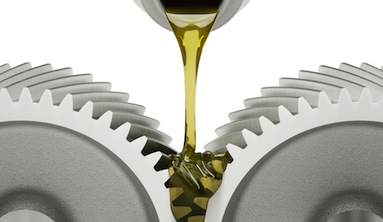- Cerma Motor OIl
- Oil Comparison
- Motor Oil Myths
- Cerma vs Present
- Cerma vs New
- White Paper
- Engine Wear
Cerma and the New Diesel Standards
Two significant changes coming in 2016:
1. Federally mandated requirements in diesel engines requiring additional emission and fuel economy improvements. Engines will run at higher temperatures, run more on biodiesel, and have more air circulating within the engine.
2. New oil specifications are being designed to meet these new engine standards. The new specifications include:
a) Lower viscosity oil with same engine protection -- to increases fuel economy
b) Higher engine temperature protection
c) Backwards compatibility for older engines
d) Oxidation and aeration protection
e) Compatibility and protection with Biodiesel
The oil industry has already decided that in order to meet all these requirements, the specifications will be based on two different oil types: Type I for new engines and lower viscosity to increase fuel economy and Type II to be compatible with older engines (higher viscosity), performing to the new standards.
Cerma Motor Oil already exists and meets all the proposed standards in engine protection, oxidation, temperature and biodiesel. In addition, Cerma tackles the important issue with older engines - restoring performance so that the lower viscosity oil with increased fuel economy properties will protect and function.
It is a two step process for Cerma for older engines. First treat the engine with Cerma Engine Treatment. Second, change oil to Cerma Motor Oil.
In addition, Cerma Motor Oil confronts the monkey on everyones back -- oil change intervals. With Cerma, oil change intervals can be extended by 3,4 or even 5 times the standard.
Below is some research on the new PC-11 standards, the lower viscosity and improved fuel economy. A lot of interesting information... One item of note is the 2011 guide from the EPA promoting the use of lower viscosity oils and gives some standard saving numbers.
One last comment on the fuel economy of using lower viscosity oils. Most of the research below seems to point to testing done when moving from 40 weight to 30 weight, or 30 weight to 20 weight oil. These tests conclude that a real savings does exist:
• • Moving from 40 to 30 - 2% to 5%
• • Moving from 30 to 20 - 4% to 8%
This would suggest that the fuel economy savings increases exponentially as you move down the viscosity scale. This is confirmed by our internal testing where we have seen a 15% to 20% savings moving from a 30 to a 10, and a 25% to 35% savings moving from a 30 to a 5.
Jan 1st, 2013 from stle.org
PC-11 and GF-6: New engines drive change in oil specs
by Jean Van Rensselar
The challenge now is developing tests to deal with the radical transformation in motors and components.
KEY CONCEPTS
• Two new regulations necessitated groundbreaking specifications.
• Of particular interest is the contribution of lubricants to fuel economy.
• Subcategories for each regulation address backward compatibility issues
BIG CHANGES TO ENVIRONMENTAL REGULATIONS and engines mean big changes to lubricants. This is why it is no coincidence that there are two new oil specifications on the horizon at the same time: PC-11 for heavy-duty diesel engines and GF-6 for passenger automobiles. For each specification (and for the first time), there are likely to be two versions: one for current and future engines and another compatible with older engines. Consumers and maintenance workers will have to be on their toes.
Given that the purpose of oil specifications is to prevent in-use performance issues, the historical absence of any major issues with oil when it’s used as specified is a strong indicator of the strength of the current specification development system.
Joan Evans, Infineum industry liaison advisor, explains, “For both PC-11 and ILSAC GF-6, there are urgent needs to develop new tests to replace those for which the current hardware will shortly no longer be available. In addition, there is a need to develop new tests to evaluate lubricant performance in emerging hardware platforms. Engine hardware design changes are being dictated by the need to improve fuel efficiency and reduce emissions to meet stringent new environmental regulations.”
PC-11
In 2011 the National Highway Traffic Safety Administration (NHTSA) issued a regulation, which phases in from 2013 to 2018, that limits greenhouse gases and for the first time requires fuel economy improvements for medium and heavy-duty trucks. This was a primary driver for PC-11. In June 2011 the Engine Manufacturers Association (EMA) asked the American Petroleum Institute (API) to develop a new lubricant category for heavy-duty diesel engines that were being developed. PC-11 (PC stands for proposed category) will offer performance beyond the time-tested API CJ-4 engine oils.
The CJ-4 oil specification, introduced in October 2006, has been the standard longer than nearly all diesel engine oil categories. But since October 2006, engine designs have changed significantly. For example, many engine parts are made of different metals, and cylinder pressures have increased. The need for PC-11 was driven by:
• Proposed U.S. government regulations on fuel economy and CO2 emissions.
• Increasing biodiesel use.
• The need for improved protection from higher engine temperatures.
• The need for improved shear stability.
• The need for adhesive wear protection.
• The need to reduce or eliminate engine oil aeration.
EMA requested that the new category for lubricants be split into separate and distinct subcategories, one that preserves historical heavy-duty criteria (higher HTHS) and one that provides fuel efficiency benefits while maintaining durability (lower HTHS). The proposal presented by the EMA includes performance specifications to address:
• Compatibility with and protection from biodiesel.
• Better engine protection from aeration.
• Better protection against scuffing wear.
• Improved shear stability and oxidation stability.
After receiving the request and conducting preliminary research, API determined that a need did indeed exist and eventually established the PC- 11 designation. In addition, the institute recognized the need to establish new category tests.
PC-11 will introduce two new oils: One will be increased engine protection at traditional viscosities, and the other will be new oils at lower viscosity which meet the same performance requirements. Two separate designations are sought for the two distinct specifications. PC-11 is scheduled for API licensing by Jan. 1, 2016.
Aug 28th, 2013 from trucknews.com:
Shell hints improvements may be in store with new PC-11 engine oil category
By James Menzies
The API PC-11 engine oil category is slated to be rolled out to industry in 2016. While engine oil categories can be a difficult thing to get excited about, early test results from Shell suggest fleet owners may have much to look forward to in this particular changeover. Typically, emissions mandates have driven new engine oil categories roughly every four years. By the time PC-11 hits the market in 2016, the current CJ-4 category will have been on the market for a decade, which Shell’s global OEM technical manager Dan Arcy said is a credit to the effectiveness of the CJ-4 specification.
All good things must come to an end, however, and CJ-4 will eventually be phased out by the new category, which was designed to handle the increased engine temperatures - to the tune of +10 C - expected of the next-generation engines, as well as other challenges.
Low-viscosity engine oils - those of a weight of 10W-30 and lighter - have figured prominently in discussions around the new standard; not surprising, since it’s expected low-vis oils will be required, or strongly recommended, to comply with impending greenhouse gas emissions rules in the US and Canada. In fact, PC-11 will have two sub-categories: one validating the performance of conventional 15W-40 and heavier oils, and another category for lighter-weight products.
While it’s now widely accepted that low-viscosity oils provide fuel savings of about 1.6% (for a 10W-30 oil, compared to a 15W-40), concerns remain about the lighter-weight oil’s ability to provide protection equal to that of a conventional 15W-40.
Nov 13th, 2013 from imakenews.com:
EMA Requests PC-11 Delay
By Steve Swedberg
EMA, the Truck and Engine Manufacturers Association, has requested a delay in the first-licensing date for the next heavy-duty engine oil upgrade, PC-11. EMA now wants the oils to debut April 1, 2016, giving it three more months to complete engine test development.
Original plans called for the oils to be commercially available by Jan. 1, 2016, to coincide with the introduction of more stringent vehicle fuel economy and emissions limits set by the federal government. EMA now wants the launch date for the new oils be pushed back to April 1, 2016, to allow more time to complete engine test development.
Feb 5th, 2014 from lubesngreases.com:
PC-11 Team Ponders New Viscosity Grade
By Steve Swedberg
PC-11’s New Category Development Team last week voted on critical tests for the coming heavy-duty engine oil category, and debated whether a new SAE viscosity grade is needed.
Feb 2011 from epa.gov
Paper from EPA on Lower Viscosity Oils and Fuel Savings
CLICK HERE
Aug 31st, 2013 from overdriveonline.com:
Low-viscosity oil field trials pushing fuel economy
by James Jaillet
What does the future of engine oil look like for the trucking industry?
According to Shell Rotella reps at a press event in Hamburg, Germany, this week, lowering the viscosity of heavy duty engine oils is the name of the game for the foreseeable future.
Shell is vigorously testing low viscosity oil’s ability to protect an engine the same way 15W-40 oil does, and so far the tests show it does, says Dan Arcy, company OEM technology manager.
The company’s also conducted many tests related to fuel economy, including field trials with some major North American fleets. The three Arcy talked about this week saw gains ranging from 1.6 percent better fuel economy all the way up to 3.3 percent better.
Shell Technology Manager Keith Selby is confident in a better-than-3-percent increase, saying low viscosity oils are capable of increasing fuel economy by 3.5 percent. “So,” he says, “that’s the way of the future.”
Lower viscosity oil makes it easier for engine parts to move around, which is what allows the boost in fuel economy.
Oil’s viscosity — the thickness of the engine oil — holds the key to pushing fuel consumption down and helping engine manufacturers meet the challenges placed in front of them by federal regulations that mandate increased fuel economy for trucks and lowering carbon dioxide emissions.
Richard Tucker, Shell’s GM of technology for the commercial fuel and lubricants division, said lubricant makers know lowering the viscosity of the oil (making it thinner) used by heavy duty trucks will increase fuel economy in trucks and, in turn, lower carbon dioxide emissions.
The challenge, though, says Tucker, is to ensure the oil used by the industry still does its job of keeping an engine’s vital parts lubed and working properly and that it does not decrease engine life when compared to using the standard 15W-40 engine oil used today.
“How do we get lowest viscosity we can while still protecting engine? This is the challenge,” Tucker says.
That challenge, though mostly focused now on working with engine manufacturers and truck buyers to educate them on the benefits of the lower viscosity oil, is not the end, says Tucker
Jan 15th, 2014 from fuelsandlubes.com
Engine oils formulated with prototype low-viscosity ionic liquids deliver 2% fuel economy improvement
by Author F&L Asia Ltd
Prototype low-viscosity ionic liquid-additized engine oil demonstrated a 2% improved fuel economy compared to Mobil 1 5W-30 engine oil (3.93% over the 20W-30 baseline oil) in standard fuel efficiency engine dynamometer tests. The prototype oil also successfully passed a 100-hour high-temperature, high-load engine dynamometer test.
Friction is the cause of the loss of ~10-15% of the energy in an internal combustion engine; for the transportation sector, parasitic friction (primarily induced by elastohydrodynamic drag between the piston rings and cylinder liners, which is proportional to the lubricant viscosity) consumes approximately 400 million barrels of oil annually in the U.S. Accordingly, the U.S. Department of Energyʼs (DOEʼs) Vehicle Technologies Office, which sponsored this research, has set a goal of 2% fuel economy improvement via lubricant advances by 2015.


